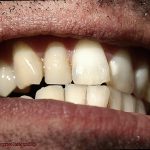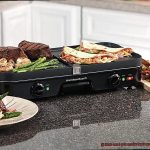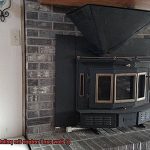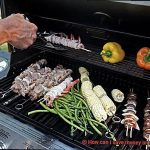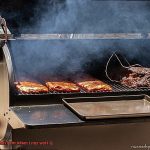Summer is in full swing, and that means one thing – grilling season. The tantalizing aroma of burgers, ribs, and veggies sizzling on the grill is enough to make anyone’s mouth water. Being able to whip up a mouth-watering feast on the grill is a skill that will have you crowned as the king or queen of any backyard BBQ party.
But if you’re new to grilling, it can be intimidating. Fear not. Becoming a good grill master isn’t rocket science, and we’re here to help you take your game to the next level with some expert tips.
First things first – you need the right grill for the job. Gas, charcoal, or electric? Each has its pros and cons, but if you want that smoky flavor that only comes from charcoal grilling, then that’s what we recommend. And don’t forget about investing in essential tools like tongs, spatulas, and basting brushes – they’ll make your life much easier.
However, it’s not just about having the right equipment; technique is key. Knowing how to control temperature, marinate meat properly and season it perfectly are all part of being a great grill master. From selecting the best cuts of meat to mastering grilling times like a pro – we’ve got you covered.
So, let’s fire up those grills and get ready to become a true grill master.
Contents
Types of Grills
Grilling is an art form, and the type of grill you use can make or break your masterpiece. With so many options available, it can be overwhelming to choose the right one for your needs. In this article, we’ll explore the different types of grills and their unique features to help you make an informed decision.
Charcoal Grills:
Charcoal grills are a traditional option for grill masters who want that smoky flavor. They use charcoal as a fuel source and require a bit more effort to start than other types of grills. However, the reward is worth it – charcoal grills offer a distinct flavor that is hard to replicate with other types of grills. They come in various sizes and shapes, including kettle, barrel, and kamado-style grills.
To use a charcoal grill, you’ll need to light the charcoal and wait until it turns gray before adding your food. One of the advantages of charcoal grills is that they get very hot, so you can sear meat quickly and get those beautiful grill marks.
Gas Grills:
Gas grills are the most popular type of grill on the market. They use propane or natural gas as a fuel source and offer quick heating and temperature control. Gas grills come in various sizes and styles, including freestanding, built-in, and portable options.
One of the advantages of gas grills is their convenience. They’re easy to clean and maintain, making them a great choice for busy grill masters. Additionally, they heat up quickly and offer precise temperature control, which is ideal for cooking delicate foods like fish or vegetables.
Pellet Grills:
Pellet grills use wood pellets as a fuel source and offer a unique flavor to grilled food. They’re easy to use and control, making them a popular choice for beginner grill masters. Pellet grills come in various sizes and styles, including freestanding and portable options.
One of the advantages of pellet grills is their versatility. They offer a consistent temperature and allow for slow cooking, which is ideal for smoking meats or making barbecue. Additionally, they’re eco-friendly and produce less ash than charcoal grills.
Electric Grills:
Electric grills are perfect for those who want an easy-to-use grill that requires little maintenance. They’re powered by electricity and come in various sizes and styles, including tabletop and built-in options.
One of the advantages of electric grills is that they’re suitable for indoor use since they produce minimal smoke. Additionally, they offer precise temperature control, making them ideal for cooking delicate foods like fish or vegetables.
Portable Grills:
Portable grills are perfect for on-the-go grilling and outdoor adventures like camping or tailgating. They come in various types, including charcoal, gas, pellet, and electric options. Portable grills are typically smaller in size than other types of grills but still offer plenty of cooking space for small groups.
Essential Equipment and Tools
Look no further because we have compiled a list of essential equipment and tools that every grill master needs in their arsenal.
First and foremost, you need a grill. This is the foundation of your grilling masterpiece. With so many options available, it’s important to choose a grill that suits your needs and cooking style. Gas grills are convenient and easy to use, while charcoal grills offer that irresistible smoky flavor. If you want the best of both worlds, consider investing in a hybrid grill.
Next up, you need a set of grilling utensils. A spatula, tongs, fork, basting brush, and meat thermometer are all must-haves. These tools will help you flip burgers, check the temperature of your meat, and apply sauces and marinades. Look for utensils that are made of high-quality materials like stainless steel or silicone for durability.
Don’t forget about the all-important grill brush. This handy tool will keep your grill grates clean before and after cooking, ensuring your food doesn’t stick and there’s no leftover debris from previous cooking sessions. Look for a sturdy brush with bristles that can withstand high temperatures.
If you’re feeling adventurous, consider investing in some additional equipment such as a smoker box or rotisserie attachment. A smoker box allows you to add wood chips to your grill for that irresistible smoky flavor. And a rotisserie attachment lets you cook large cuts of meat evenly by rotating them slowly over the heat.
Controlling the Temperature

As a grill master, the ability to control the temperature of your grill is essential in achieving that perfect sear and juicy texture for your meats and veggies. So, let’s dive into the nitty-gritty of how to master temperature control on your grill.
First things first, you need to consider the type of grill you’re using. Gas grills typically come with built-in temperature controls that make adjusting the heat a breeze. Meanwhile, charcoal grills require a bit more finesse, but it’s not rocket science. With charcoal grills, you can control the temperature by adjusting the amount of charcoal used and its placement within the grill. To achieve a hotter fire, add more charcoal, and for a cooler fire, use less charcoal or spread it out more evenly across the bottom of the grill.
But that’s not all- temperature control also depends on how you’re cooking your food. Direct heat grilling involves placing your food directly over the heat source, giving a nice sear to the meat. On the other hand, indirect heat grilling involves placing your food next to or away from the heat source, which is perfect for slow-cooking and smoking.
It’s also crucial to consider external factors like wind, humidity, and altitude when controlling the temperature of your grill. These factors can significantly affect the temperature of your grill, so make sure to adjust accordingly.
Flipping and Timing Techniques
Grilling is an art form that requires skill, patience, and practice. To achieve the perfect grill marks and juicy texture of your meat, mastering temperature control is crucial. But equally critical are the flipping and timing techniques. In fact, these techniques can make or break your grilling game.
Flipping is not as simple as it sounds. One of the biggest mistakes people make is flipping too often. Over-flipping can cause the food to dry out and lose its natural juices. So, how often should you flip? The golden rule is to flip your food only once or twice during the cooking process. This ensures that both sides cook evenly without drying out.
Using the right tools for flipping is also crucial. A good pair of tongs or spatula will prevent piercing the food and letting those precious juices escape. And remember to brush your grill grates with oil before cooking to prevent sticking.
Timing is everything when it comes to grilling. Knowing how long to cook each type of food for optimal results is crucial. Different types of meat require different cooking times, so it’s essential to do your research before firing up the grill.
For example, a medium-rare steak should be cooked for around 4-5 minutes per side on high heat, while chicken breasts may take around 6-8 minutes per side on medium heat. Consider the thickness of your meat when determining cooking times. Thicker cuts require longer cooking times than thinner cuts.
But timing doesn’t end when you take the meat off the grill. Letting your meat rest for a few minutes before cutting into it is just as important as cooking it for the right amount of time. This allows the juices to redistribute throughout the meat, resulting in a more tender and flavorful final product.
Seasoning for Perfection
Seasoning your meat correctly can be the difference between an average meal and an unforgettable experience. Choosing the right ingredients is the initial step to perfect seasoning. From simple salt and pepper to complex spice blends, the possibilities are endless, and it all depends on your personal preference.
Starting early is a crucial tip when it comes to seasoning. Waiting until you are ready to grill your meat won’t allow enough time for the flavors to fully develop. Ideally, you should season your meat at least 30 minutes before grilling, or even overnight in the refrigerator.
Layering flavors is another essential aspect of seasoning. Combining herbs, spices, and other seasonings can bring out a complex and delicious flavor profile in your meat. Think of it as creating a symphony of flavors – each ingredient adding its unique note to the overall composition.
When choosing your seasoning ingredients, it’s important to consider the type of meat you’re grilling. For example, chicken pairs well with herbs like thyme and rosemary, while beef can handle bolder spices like chili powder and cayenne pepper.
In addition to dry seasonings, you can also use marinades or wet rubs to add flavor to your meat. These can be made with a variety of ingredients like olive oil, citrus juice, soy sauce, or vinegar.
Finally, mastering the art of seasoning is key to becoming an excellent grill master. It takes some experimentation and a little bit of know-how but with patience and practice, you’ll be able to create delicious meals that will impress all your guests. So go ahead and get creative with your seasonings – your taste buds will thank you.
Safety Tips for Grill Masters
As a grill master, you have the responsibility to ensure that grilling is not only fun but also safe. To avoid any accidents, it’s crucial to follow these safety tips:
Choosing the right location
Before setting up your grill, make sure it’s in an open area away from anything flammable. This includes trees, bushes, and overhanging structures that can easily catch fire.
Keeping your grill clean
A dirty grill can become a fire hazard due to grease buildup. To prevent this, clean your grill after every use and remove any debris or grease that may have accumulated.
Using the right tools
When grilling, it’s important to use long-handled grilling tools that will keep you at a safe distance from the heat source. Additionally, invest in heat-resistant gloves and aprons to protect yourself from burns.
Having a fire extinguisher nearby
In case of an emergency, having a fire extinguisher within reach is crucial. It can help you quickly put out any fires that may occur.
Monitoring the temperature
Keep an eye on the temperature throughout the cooking process to prevent flare-ups. Make sure your grill is at the right temperature before adding food and adjust as needed.
Keeping children and pets away
Children and pets are curious by nature and may not understand the dangers of a hot grill. Keep them at a safe distance and never leave them unattended near the grill.
Cleaning and Maintenance Tips
Grilling is a beloved pastime for many, but it’s important to remember that cleaning and maintenance are crucial aspects of becoming a good grill master. Here are five reasons why regular cleaning and maintenance are essential to keep your grill in top condition:
Food Safety
Ensuring that your grill is clean after every use is crucial for food safety. Leftover debris and grease can harbor harmful bacteria that can cause foodborne illness. By cleaning your grill thoroughly, you reduce the risk of contamination and keep your guests safe.
Improved Taste
A clean grill not only keeps you safe but also improves the taste of your food. Residual debris from previous grilling sessions can impact the flavor of your current meal and cause it to stick or burn. A well-maintained grill ensures that your food tastes great, every time.
Prolongs Lifespan
Regular maintenance of your grill is essential to prolong its lifespan. Checking for rust or damage to the grates, burners, and other parts of the grill and replacing any damaged parts promptly can keep your grill functioning properly for years to come.
Prevents Fire Hazards
A dirty grill can pose a fire hazard. Grease buildup can ignite and cause a dangerous fire. By keeping your grill free of debris, you reduce the risk of a fire.
Adds Flavor
Seasoning your grill is another important aspect of maintenance that adds flavor to your food. Coating the grates with vegetable oil and heating the grill on high for 15-20 minutes several times throughout the season helps prevent rust and corrosion while enhancing the flavor of your grilled dishes.
Different Styles of Grilling
Grilling is more than just cooking food over an open flame – it’s an art form that requires skill and knowledge. To become a true grill master, you need to understand the different styles of grilling and their unique characteristics.
The most common style of grilling is direct grilling. This involves cooking food directly over the heat source, such as charcoal or gas flames. It’s perfect for small cuts of meat and vegetables that cook quickly, like burgers, hot dogs and kebabs. To achieve the best results with direct grilling, make sure your grill is hot before you start cooking.
On the other hand, indirect grilling is a more gentle style of grilling that involves cooking food next to the heat source rather than directly over it. It’s ideal for larger cuts of meat, such as roasts or whole chickens, as it allows for more even cooking without burning the outside. Set up your grill with two zones – one for direct heat and one for indirect heat – to achieve the best results with indirect grilling.
If you’re looking for a smoky flavor, then smoking is the style of grilling for you. Smoking involves cooking food slowly over low heat and wood smoke, giving it a rich and smoky flavor. This method is perfect for meats like pork shoulder or brisket that need to cook low and slow to become tender and flavorful. Use a smoker or a grill with a smoker box to achieve the best results with smoking.
Last but not least, we have rotisserie grilling. This style of grilling involves cooking food on a rotating spit. It’s perfect for evenly cooking larger cuts of meat and achieving a crispy exterior. Think whole chickens, pork loins, and even turkeys. To achieve the best results with rotisserie grilling, make sure your meat is evenly balanced on the spit and rotate it slowly over the heat source.
zDoapKNKNWc” >
Conclusion
To become a grill master, one must have patience and practice. However, with the right tools and techniques, anyone can master the art of grilling. Whether you prefer charcoal, gas, pellet or electric grills, each has its unique features that can help you achieve the perfect sear and flavor. From tongs to spatulas to basting brushes and meat thermometers, essential equipment is a must-have for any grill master.
Temperature control is key in creating juicy and tender meats while flipping and timing techniques play an important role in producing those beautiful grill marks. Proper seasoning is equally important to bring out complex flavors that will leave your guests impressed.
Safety should always be top of mind when grilling. Choosing a safe location, using long-handled tools and keeping children and pets away from the grill are crucial steps. Regular cleaning and maintenance of your grill not only keeps it in top condition but also ensures food safety and adds flavor to your grilled dishes.
Understanding different styles of grilling like direct grilling, indirect grilling, smoking or rotisserie grilling allows for versatility in cooking different types of meats.


